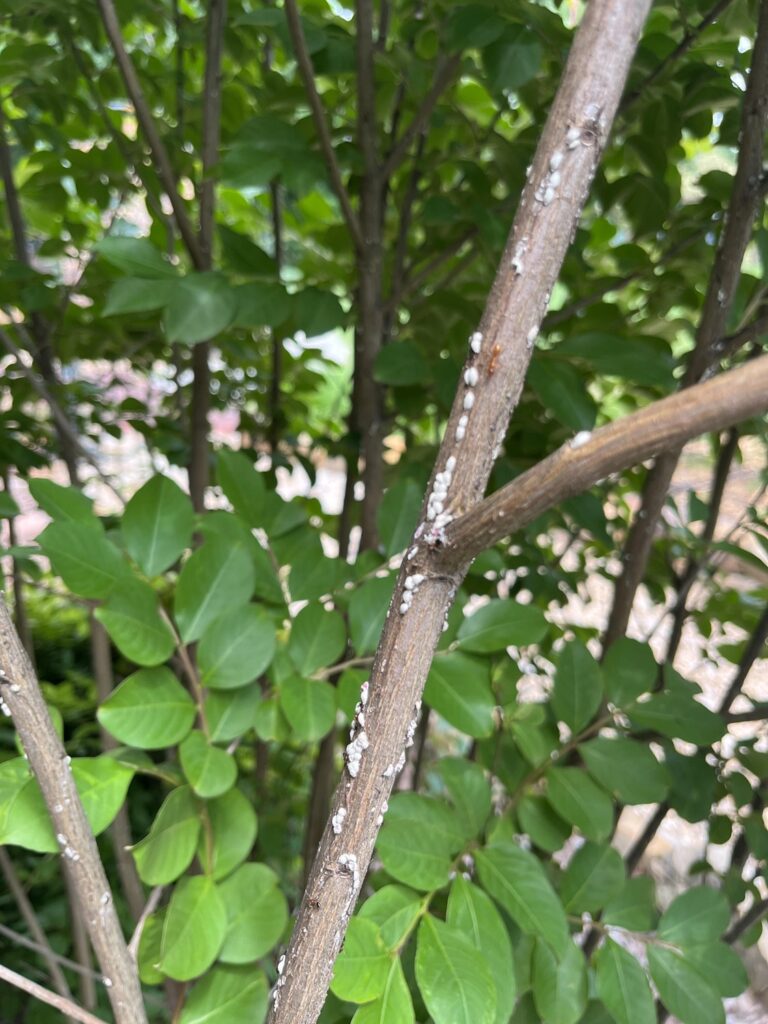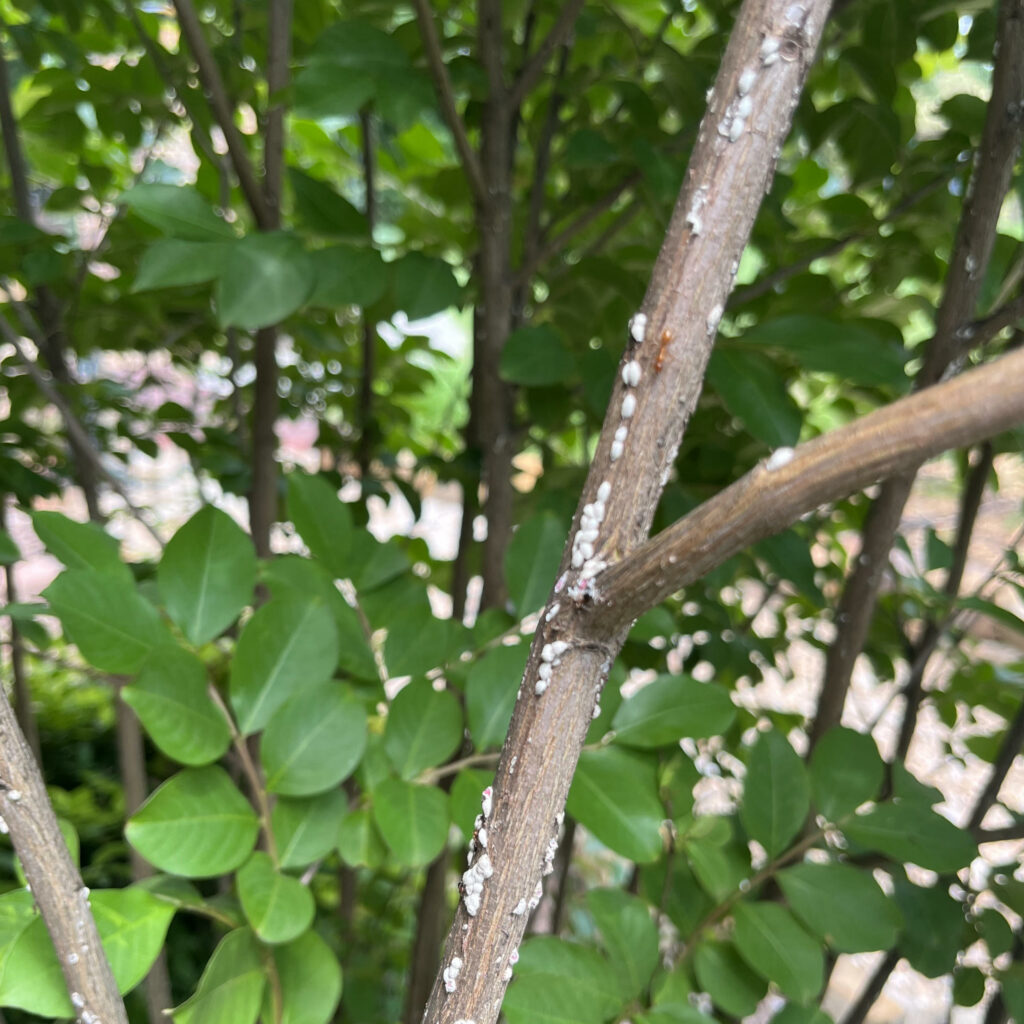Kathy Berryhill
Creek County Master Gardener
Crepe myrtles are one of the most loved plants in the southern part of the US. Gracing us with a beautiful show of summer flowers, they have attractive bark and display brilliantly colored leaves in the fall. Bloom time can even be extended by deadheading (trimming) the faded blooms to produce a second, smaller bloom. Crepe myrtles handle our climate well as they are rated to survive temperatures down to zero. If subjected to lower temperatures they come back from the roots. All in all, a good plant.
Crepe myrtles perform in landscapes for years. Other than dealing with aphids which produce a honeydew excretion that turns the bark to black, or some moldy leaves, the crepe myrtle just plugs along. But there is a new threat to this beloved plant.
On a garden walk last week, I spotted multiple white, felt-like spots on a large crepe myrtle. As this was something I’d never seen before, I quickly did some research and found that this was an infestation of Crepe Myrtle Bark Scale (CMBS). Further research convinced me that this is not something to be ignored. In fact, prompt action would be required to prevent the spread to other crepe myrtles in the landscape.


CMBS arrived in 2004, thought to be carried on an imported, infected plant from Asia. First detected in northern Texas, CMBS is now quickly spreading throughout much of the southern U.S. In fact, the southerly winds have even spread this infestation to Kansas! The nymphs associated with this pest spread naturally via wind and easily reproduce in nursery stock.
The result of an infestation of CMBS is a reduction in flower size and quantity, stunted growth and the same black sooty mold that is seen on plants that have an aphid infestation. CMBS might be found anywhere on crape myrtles, but often appears near pruning sites and branch crotches of older wood.
Visual detection of CMBS is straightforward. The whitish-gray felt like spots on black sooty bark are the telltale sign. Wingless adult females lay eggs under the scale from May through September. If the scale is squashed, a resulting pink liquid emerges. Crawlers emerge from under the scale cover within a day or two and spread to new areas of the plant or are windblown to another plant. Two generations of CMBS are typical for our area.
CMBS rates are very high in Tulsa County and appear to be spreading in Creek County. It’s important to inspect all crepe myrtle in your landscape now. If CMBS is found, there is no need to remove your trees, as it is not fatal to the plant. But if you see an infestation, immediate treatment is necessary.
What are the steps to control CMBS? Many gardeners would first think of using a systemic, neonicotinoid insecticide. But the ingredients in that treatment pose a threat to pollinating insects such as honeybees and bumblebees. Another possible solution would be natural predators. This is a newly introduced species in our environment, so its enemies are limited but include lady beetles. However, while lady beetles are effective, they do not have enough effect on CMBS to stop its spread.
The recommended treatment is more involved and requires ongoing maintenance. First, scrub infected branches with a soft brush and mild solution of dish washing soap and water. This removes the female scale and egg clusters along with the black sooty mold on the branches and trunks. This will need to be repeated for years to control CMBS. Remove all leaf debris at the base of the plant. During the dormant stage of the crepe myrtle, follow up with an application of a horticultural oil. All of the plant must be treated, including under loose bark, branch crotches and other crevices.
Gardeners may resort to removing the plant. If the plant is cut down, properly remove all diseased material. Burning the infected limbs is best, if that option is available. If disposing of the infected material in a trash collection, double bag the limbs to limit the spread. Do not place this material in a compost pile.
Inspect your crepe myrtles now. If left undetected, CMBS will spread rapidly. This can be a difficult pest to control and it may take multiple years of treatment.
Upcoming dates: Creek County Garden Tour: June 18th. Tickets are available from local Master Gardeners or at the Garden Tour: Questions? Contact gardener@sapulpatimes.com
Happy Gardening!











